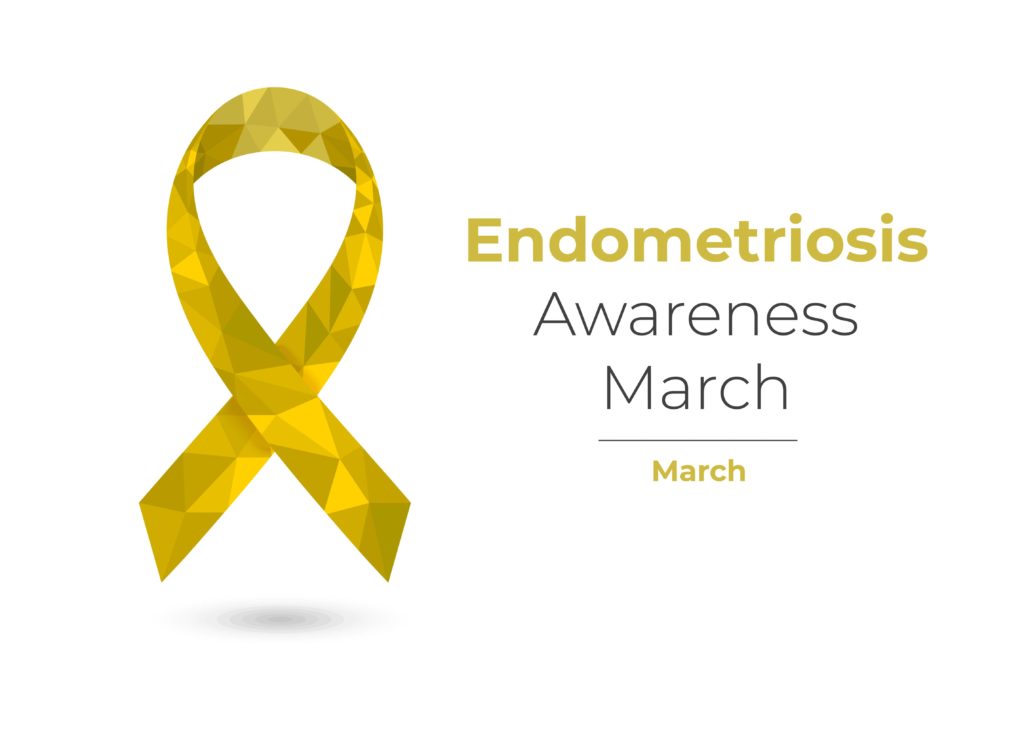Endometriosis
6 Mar 2021 | Anne Marie Fogarty
| Share with

Endometriosis Awareness Month is upon us, Endometriosis UK aims to drive awareness, open conversations and encourage suffers to talk about this silent disease. Endometriosis affects 1 in 10 women and those assigned females at birth, yet society all too often considers it a taboo.
What is Endometriosis?
Endometriosis is a condition where tissue similar to the tissue that lines the uterus is also found elsewhere in the body, mainly in the abdominal cavity. Each month these cells or tissue reacts as the womb cells react and bleed, however, the cells found in endometriosis have no escape as they don’t leave the body.
The bleeding from these cells can result in chronic pain, inflammation, and scar tissue formation.
What are the symptoms of endometriosis?
- Painful periods (dysmenorrhea). Pelvic pain and cramping may begin before and extend several days into a menstrual period.
- Pain during intercourse.
- Pain with bowel movements or urination.
- Excessive bleeding. You may experience occasional heavy menstrual periods or bleeding between periods (intermenstrual bleeding).
- Infertility. Sometimes, endometriosis is first diagnosed in those seeking treatment for infertility.
- Other signs and symptoms. You may experience fatigue, diarrhoea, constipation, bloating or nausea, especially during menstrual periods.
What is the treatment for endometriosis?
At present, there is no cure for endometriosis. The different treatments available for endometriosis aim to reduce the severity of symptoms and improve the quality of life for a woman living with the condition.
Treatment options available to women with endometriosis are:
- Surgery
- Hormone treatment
- Pain relief
For more information on treatment, why not take a look at Endometriosis Treatment Information Pack here.
Let’s take a look at the facts
- 1 in 10 women of reproductive age in the UK suffers from endometriosis.1
- 10% of women worldwide have endometriosis – that’s 176 million worldwide.1
- The prevalence of endometriosis in women with infertility be as high as 30–50%.2
- Endometriosis is the second most common gynaecological condition in the UK.3
- Endometriosis affects 1.5 million women, a similar number of women affected by diabetes.4
- On average it takes 7.5 years from the onset of symptoms to get a diagnosis.5
- Endometriosis costs the UK economy £8.2bn a year in treatment, loss of work and healthcare costs.6
- The cause of endometriosis is unknown and there is no definite cure.
For all your questions Endometriosis UK has a wonderful FAQs page where you can find all the answers to many common questions.
If you or someone you love is suffering from this chronic condition, there is so much support and advice out there. A start will always be a GP visit to discuss symptoms and potential treatments. If you have questions or want more information, Endometriosis UK is a great online resource packed with relevant data and support.
Yes, endometriosis can be painful and a horrible illness, but with the right help and support, you can live a healthy and full life with it. So, for March and beyond, let’s all raise awareness and let’s talk about endometriosis so that every woman, every young teenage girl and everyone out there knows exactly what it is and how to find support.
References
https://endometriosis-uk.org/endometriosis-facts-and-figures
1. Rogers PA, D’Hooghe TM, Fazleabas A, et al. Priorities for endometriosis research: recommendations from an international consensus workshop. Reprod Sci 2009;16(4):335-46.
2. Meuleman C, Vandenabeele B, Fieuws S, Spiessens C, Timmerman D, D’Hooghe T. High prevalence of endometriosis in infertile women with normal ovulation and normospermic partners. Fertil Steril 2009;92(1):68-74.
3. University College London Hospitals. General information about Endometriosis. Accessed February 2014.
4. Diabetes UK: Diabetes prevalence 2012. (April 2012). Diabetes affects around 2.9 million people, of which slightly less than half of these are women.
5 Diagnosis Survey. Endometriosis UK. February 2011.
A total of 2890 women with endometriosis took part in a public awareness survey for Endometriosis UK. The average time given for diagnosis time from symptoms to diagnosis was 7.5 years. A similar finding of 7.4 years was found in:
Arruda MS, Petta CA, Abrão MS, Benetti‐Pinto CL. Time elapsed from onset of symptoms to diagnosis of endometriosis in a cohort study of Brazilian women. Hum Reprod 2003;18(4):756-759.
6. Simoens S, Dunselman G, Dirksen C, et al. The burden of endometriosis: costs and quality of life of women with endometriosis and treated in referral centres. Hum Reprod 2012;27(5):1292-9.
Leave a Comment
You must be logged in to post a comment.

06 Mar 2021 | Leave a comment
Share with socials